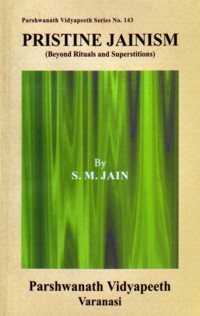The forest (Kalpavriksha) based model as in vogue in Sukhma-Sukhma, Sukhma and Sukhma-Dukhma before the advent of agriculture, ensured sustainability of all natural resources and their productivity. People were happy, free from any anxiety and conflicts. All life forms lived symbiotically, mutually helping each other. The descending decline was because of human greed resulting in increasing biotic pressure detrimental to natural resources. Agriculture accentuated the process. The descending trend can be reversed to ascending progress and sustained at desired stage as has been possible in some areas. What is required is containment of human needs within carrying capacity of natural resources. The types of Kalpavrikshas (trees), which provided for all the needs of people during Sukhma-Sukhma and Sukhma period, are still left in forests, though in dwindling numbers. These can be protected, planted and multiplied. Forest based model can be established again by adopting Agro-forestry as advised by Adi Tirthankar Rishabhdeo (in modern forestry term the Taungya system). Trees giving edible seeds, fruits and also giving fibres, flosses, medicines, chemicals etc. can be planted in all agriculture fields at 5 to 6 metre spacing. Agricultural crops can be raised till trees are tall and big when agriculture will not be possible but by this time trees will start yielding various products. The forests once created are everlasting if properly managed by limiting the harvesting of their products within productivity limits. There is no recurring expenditure as in agriculture on tilling, sowing, watering, manuring etc. crop after crop. It modern high-tech agriculture the input costs are rising every year and it is not profitable at all and is being sustained on enormous subsidies all over the world. The average yield of edible seeds only (excluding fruits, flowers etc.) from polyculture forest will be 10 tonnes per hectare per year without any recurring cost.
In forest there is no need of tilling as the various burrowers and rats etc., which are considered harmful in agriculture, are useful as they do the work of tilling by turning the soil. Birds, animals including humans, insects etc. are useful in dispersal of seeds, which are also carried far and wide by water and wind also. Forests are self-fertilising, self-watering and do not need any poisonous pesticides as there is natural control of pests and predators in mixed polyculture forests. There is no need of polluting dams, canals etc. Every tree is a little dam itself. It has been experimentally proved that in well forested land mass there is more than 90% infiltration and only 10% run off of rain-water. There will be no floods during rains and rivers and wells etc. will have perennial water supply from underground water reservoirs. Soil erosion will be stopped. There will be no pollution of any sort and there will be no famines as yield of edible seeds, fruits etc. will not be much affected by drought, excess rains and other vagaries of nature. Climate will be ameliorated. Rainfall will be regular. The fury of cyclones etc. will also be subdued. There will be no problem of waste disposal, which is becoming insurmountable in the present, consumerist predatory agriculture, industry based model. There is no dirt and squalor in good forests as the various creatures and microorganisms quickly convert all types of biological waste into useful products. In a study of wolves it was found that up and down swings in their population was directly proportionate to the availability of food supply from forests. Thus population of humans will also be in check if wants are met from forest products within their productivity limits.
The journey of human civilisation from forest model to more and more agriculture, hunting, domestication of animals was all because of changes in human behaviour. The ascending and descending trends are directly proportionate to decreasing and increasing human consumerism. The cyclic changes and human behaviour have direct relationship and are interdependent. The deteriorating human behaviour induces degradation of environment and this in turn affect human behaviour and the vicious circle continues. If the human behaviour is established by following basic tenets of Jainism, physical environment and natural resources will automatically get stabilised and descending or ascending cyclic changes will be arrested as is the case in some areas Hemvat etc. Proper understanding of relationship between cyclic changes and human behaviour is important. Even a good genetically perfect seed will not germinate in bad soil and climate where as even genetically week seed may sprout and week plants get better by proper nurturing in good environment. The conclusion from careful analysis of cyclic changes is that Jain tenets can best be followed under forest (Kalpvriksha) based model of perfect harmony between living beings and physical environment free from any sort of violence, conflict or misery. This will in turn ensure preservation of forests and their productive stability arresting time and cyclic changes to the stage of Sukhma- Sukhma, Sukhma or Sukhma-Dukhma whatever we humans want. Such a sustainable stable state as mentioned in Tiloypannati is not a mere piece of imagination but a scientific reality.
 S.M. Jain
S.M. Jain
